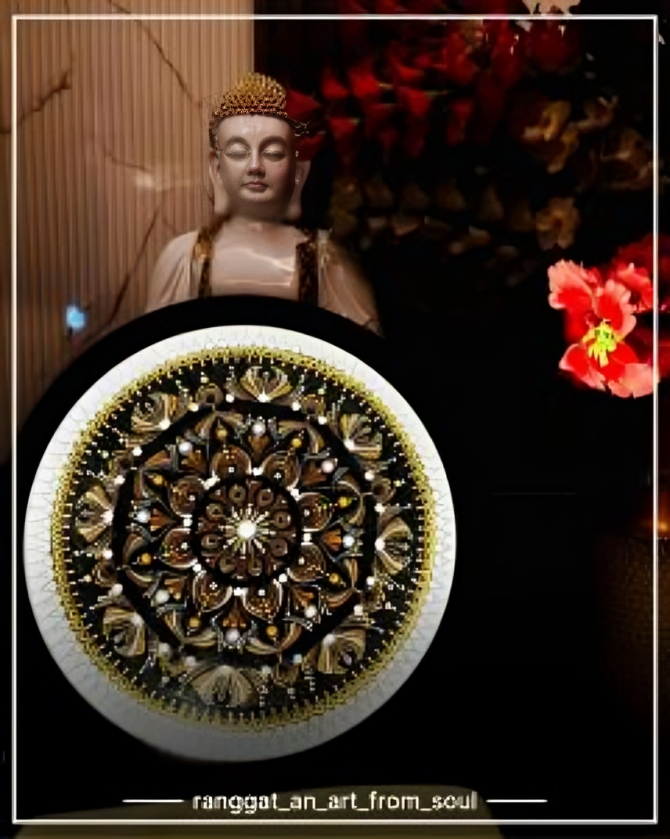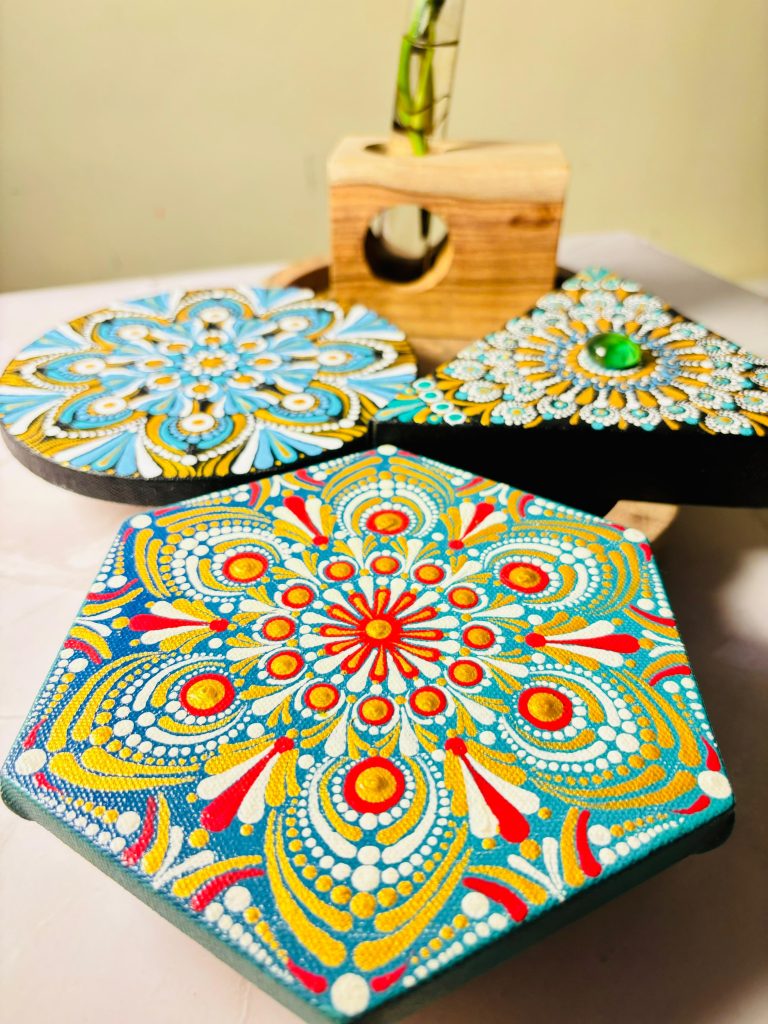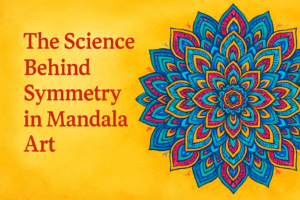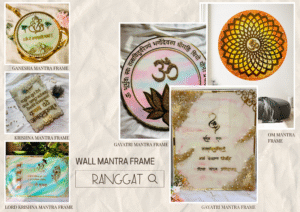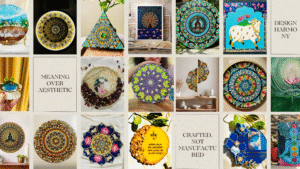Art and meditation share a fundamental relationship that taps into the depths of human consciousness. Art, especially mandala art, is a visual aid that complements and deepens meditation, which provides a mental and spiritual path toward mindfulness and inner calm. The way mandalas occupy the mind, their design, and their symbolism all contribute to their calming impact.
Mandala Art: Meditation meets creativity
Symmetry and Balance
Symmetry lies at the core of Mandala art. The circular pattern stands for unity, wholeness, and the cosmos. The brain is encouraged to concentrate on one item at a time by the radial symmetry’s repeating patterns, which create a meditative state. Through the use of repetitive patterns, the mind can achieve a rhythm that is comparable to that experienced during a meditative state. The symmetry of mandalas provides a sense of completion and anchoring, reflecting the balance we aim for in meditation.
Focus and Awareness
Creating or observing a mandala artwork helps with mental concentration, which is crucial for meditation. The observer’s attention is drawn to the minute details, which frequently feature geometric patterns and vibrant colors, which helps to calm the racing mind. This attention to a particular visual stimulus creates a perfect setting for building mindfulness—a key aspect of meditation. External distractions reduce as the mind focuses on the design, resulting in a calm mental state.
‘Mandala can help you grow as a person.’
Symbolism of the Circle
A common symbol for wholeness, infinity, and the cyclical cycle of existence is the circle. Circles are frequently used in meditation to represent the reflective process of finding one’s real self. As round pieces of art, mandalas serve as a metaphor for spiritual wholeness. Making or thinking about mandalas can be a reminder to stay grounded and connect with one’s inner serenity.
Engagement of the Senses
Mandalas are frequently created using a range of lines, colors, and shapes that appeal to the viewer’s visual senses and encourage calm. During meditation, using the senses helps in keeping the practitioner focused on the present moment. In mandalas, the colors can inspire particular feelings or mental states. Red tones can be energizing, but blue tones may encourage peace. By concentrating on these sensory aspects, the person is drawn into the experience and enters a meditative state.
Art as Therapy
“Art Is the Highest Expression of the Human Spirit.”
Art itself is a form of therapy known for its ability to reduce stress, enhance emotional expression, and promote healing. When combined with meditation, creating or viewing mandala art can be incredibly therapeutic. It allows individuals to express their inner thoughts and emotions without words, fostering a deeper connection to their emotions and mental states. This process of self-expression can act as a release for emotional blockages and help in the journey of self-discovery and healing.
A Tool for Mindful Meditation
In meditation, the goal is often to focus the mind, quiet the inner dialogue, and experience the present moment fully. Mandalas provide an accessible method to achieve this. Many meditation practices involve focusing on a mandala, either as a visual aid or through the creation process itself. The repetitive action of coloring or drawing the mandala acts as a meditative practice in itself, leading to increased mindfulness, reduced stress, and improved emotional well-being.
Connection to Spiritual Practices
Mandalas have been used for centuries in various spiritual traditions, including Hinduism and Buddhism. They are considered sacred symbols that represent the cosmos and the divine. The process of creating or meditating with mandalas is seen as a spiritual act that connects the individual with a higher consciousness. Whether through contemplation or creation, working with mandalas can help foster a deeper spiritual connection, encouraging introspection and reflection.

